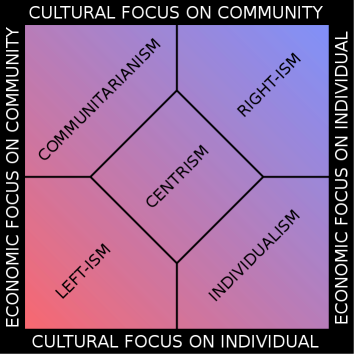conservative
Redefining the Liberal-Conservative Spectrum
Yeah, there are already dozens of ways of painting the political ideological spectrum. Many are interesting, but most also raise further questions, such as why does it look such, and how can they resolve apparent contractions within each polar ideology.
And contradictions there are, as flagged by Jost et al. (2003):
We now take it for granted in the United States that political conservatives tend to be for law and order but not gun control, against welfare but generous to corporations, protective of cultural traditions but antagonistic toward contemporary art and music, and wary of government but eager to weaken the separation of church and state. They are committed to freedom and individualism but perennially opposed to extending rights and liberties to disadvantaged minorities, especially gay men and lesbians and others who blur traditional boundaries. There is no obvious political thread that runs through these diverse positions (or through their liberal counterparts) and no logical principle that renders them all consistent.
 I’d like to suggest that none of these existing approaches is the most parsimonious nor the most powerfully explanatory when it comes to defining the key variable in political ideology. And many have trouble with the contradictions mentioned above.
I’d like to suggest that none of these existing approaches is the most parsimonious nor the most powerfully explanatory when it comes to defining the key variable in political ideology. And many have trouble with the contradictions mentioned above.
I’ve already mentioned my fondness (with reservations) of George Lakoff’s nation-as-a-family metaphor account of liberalism and conservatism – with liberals adopting a nurturant parent metaphor and conservatives a strict father metaphor. But even if that account contains a nugget of truth, it doesn’t explain why these two metaphors consistently emerge to characterise the ideological poles.
So, I’d like to propose a new one-dimensional spectrum simply based around a difference in worldview concerning whether the world is a safe or dangerous place.

